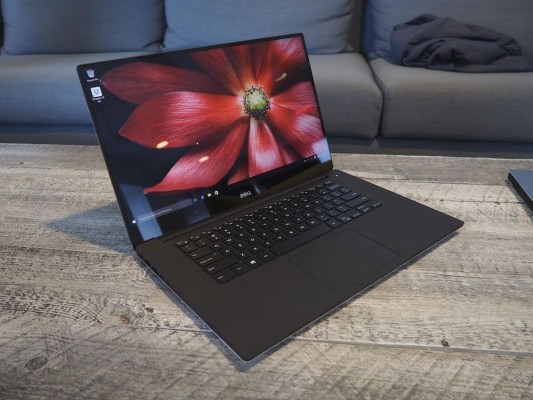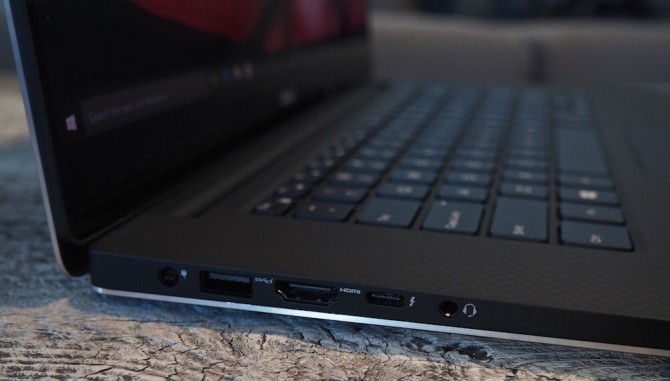Dell XPS 15 Supersizes Sweet Infinity Display for $999
Taking a cue from its groundbreaking 13-inch notebook, Dell has redesigned the XPS 15 with a sleeker design and edge-to-edge display, and lowered the starting price to $999. This 15-inch notebook, which has an aluminum lid and carbon fiber deck—and up to 17 hours of (rated) battery life—goes on sale today.
This notebook isn't just about looks. Those who crave serious power can step up to an Nvidia GeForce GTX 960M GPU and a speedy PCIe SSD.
Dell's Infinity display—which shrinks the bezel to less than half an inch—also helps decrease the overall footprint of the XPS 15 to 14 x 9.3 inches. At its lightest, the notebook weighs just under 4 pounds, but that will increase if you opt for discrete graphics and a higher-capacity battery.
Like the last generation XPS 15, you can configure this one with a 4K (3840 x 2160) display. However, Dell says this one is capable of producing 100 percent of the Adobe RGB gamut, which should appeal to photo editors and graphic designers looking for the greatest fidelity when retouching images.
MORE: Best Dell and Alienware Laptops
The one downside of the bezel-less display is that, like the XPS 13, the XPS 15's webcam is below the screen, so Skype callers will have a good look at what's up your nose. At least on the XPS 15, Dell was able to move the camera closer to the center, so that they will be able to see more than just your left side.
Apart from the design, the biggest change to the XPS 15 is its starting price of $999, which is $600 less than last year's model. For that price, consumers will get a 6th-generation Intel Core i3-6100H processor, 8GB of RAM, a 1080p non-touch display, integrated Intel HD Graphics 5300 and a 500GB HDD with 32GB of Flash memory.
Sign up to receive The Snapshot, a free special dispatch from Laptop Mag, in your inbox.
However, Dell offers a large number of upgrades, including the 4K touchscreen panel, Nvidia GeForce GTX 960M GPU with 2GB of GDDR5 memory, and up to 32GB of RAM. There are also a number of hard drive configurations available, but if you opt for a 256GB SSD or higher, it'll be PCIe, which offers more than double the performance of mSATA drives.
Another benefit of opting for an SSD is that, because of the extra space not needed for a mechanical drive, Dell adds more battery capacity. We're talking 84 watt-hours, as opposed to 56 watt-hours on the XPS 15 with a mechanical hard drive. That change will boost the XPS 15's runtime to as much as 17 hours when surfing the Web, according to Dell.
Ports include HDMI, two USB 3.0, one Thunderbolt 3 (which supports USB 3.1 Type-C), and an SD card reader. The notebook also comes with 802.11ac Wi-Fi and Bluetooth 4.1.
Dell has crafted a notebook that can compete with the 15-inch Apple MacBook Pro with Retina, in terms of looks, performance and price. With a redesigned chassis, better specs and a lower starting price, the new XPS 15 could dominate.
Michael was the Reviews Editor at Laptop Mag. During his tenure at Laptop Mag, Michael reviewed some of the best laptops at the time, including notebooks from brands like Acer, Apple, Dell, Lenovo, and Asus. He wrote in-depth, hands-on guides about laptops that defined the world of tech, but he also stepped outside of the laptop world to talk about phones and wearables. He is now the U.S. Editor-in-Chief at our sister site Tom's Guide, where he oversees all evergreen content and the Homes, Smart Home, and Fitness/Wearables categories for the site..



